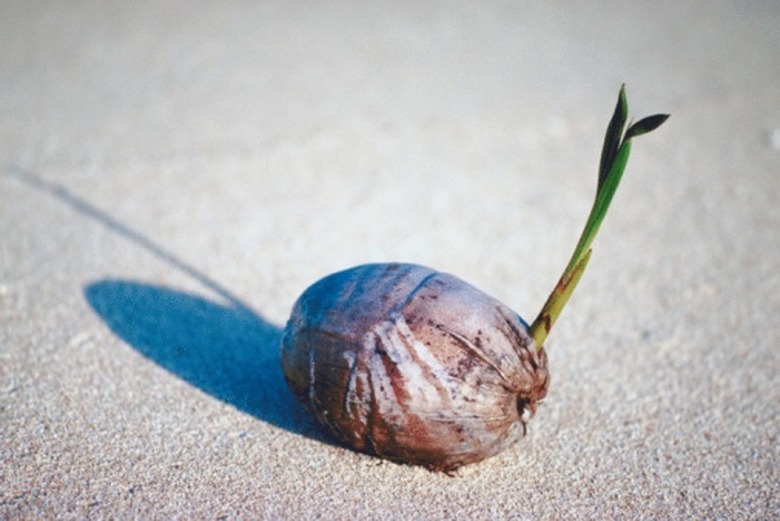How To Plant Coconut In Texas
Things Needed
- Dry coconut with husk
- 10-gallon container with drainage holes
- Sand
- Compost or peat
Tip
Continue to move the containerized palm indoors to outdoors as long as the palm remains alive and the size and weight of the pot and plant are manageable. The coconut palm grows best in hot, humid weather. Rotate the pot 90 to 180 degrees every three or four weeks to ensure the sun rays reach all sides of the coconut palm. Otherwise, the seedling palm may grow leaning toward the sun and destabilize the container, especially in a breeze.
Warning
Overly wet soils with cool or frosty temperatures leads to fungal diseases, according to Floridata. If possible, maintain a sunny location and temperatures above 70 degrees Fahrenheit to keep a coconut palm healthy.
A true tropical plant that doesn't tolerate any temperatures at or below freezing, the coconut palm must be grown in a large, movable container in most parts of Texas. In the warmest winter areas of southernmost Texas, around McAllen and South Padre Island, an outdoor-planted coconut palm may survive to live a few years. Coconut palm fronds will yellow and brown from extreme cold, with any regrowth occurring in early summer once the air warms considerably.
Step 1
Obtain a coconut seed for planting. Coconuts sold in the grocery store lack a husk and aren't appropriate for sowing. Coconuts for planting are dubbed "seednuts" and the dry husk is tan in color. This ripe seednut is ready for planting and germination once you hear liquid after you shake it.
Step 2
Fill a large container, with a diameter of at least 16 inches, with a potting soil comprised of equal parts sand and organic matter like compost, peat or commercially made potting mix. Tamp the soil down in the container with your hands so there is minimal compaction and shrinkage later after planting and watering. Fill the container so there is a 2- to 3-inch rim remaining above the soil line.
Step 3
Burrow a hole in the center of the container with your hands. Make it large enough to house the large seednut. Place the seednut into the hole so that one-half of it is in the soil, the rest exposed to the air and light. Backfill any soil around the seednut and level the soil in the container.
Step 4
Move the container to a sunny, warm location in a southern room with lots of windows or out onto the patio after danger of frost passes in early spring. For best germination, the temperatures need to be between 75 and 90 degrees Fahrenheit, and the container should receive at least 10 hours of direct sun daily.
Step 5
Water the container soil as needed to maintain a moist environment. Depending on the variety of coconut, germination occurs in as little as four to six weeks or, as Floridata notes, expect the first signs of a green sprout emerging in two to three months.
Step 6
Maintain the sunny location, warmth and moist soil as the seedling coconut grows. Slow at first, the pace of the seedling hastens as the roots grow.
Step 7
Bring the container and palm indoors once temperatures in fall drop into the 40 to 50 degree range and overwinter the plant in a warm but sunny location in the house.
Step 8
Sprinkle granular well-balanced fertilizer (such as 10-10-10) onto the soil surface the following spring in March. Relocate the palm outdoors again in spring once nighttime temperatures don't drop below 50 degrees.
